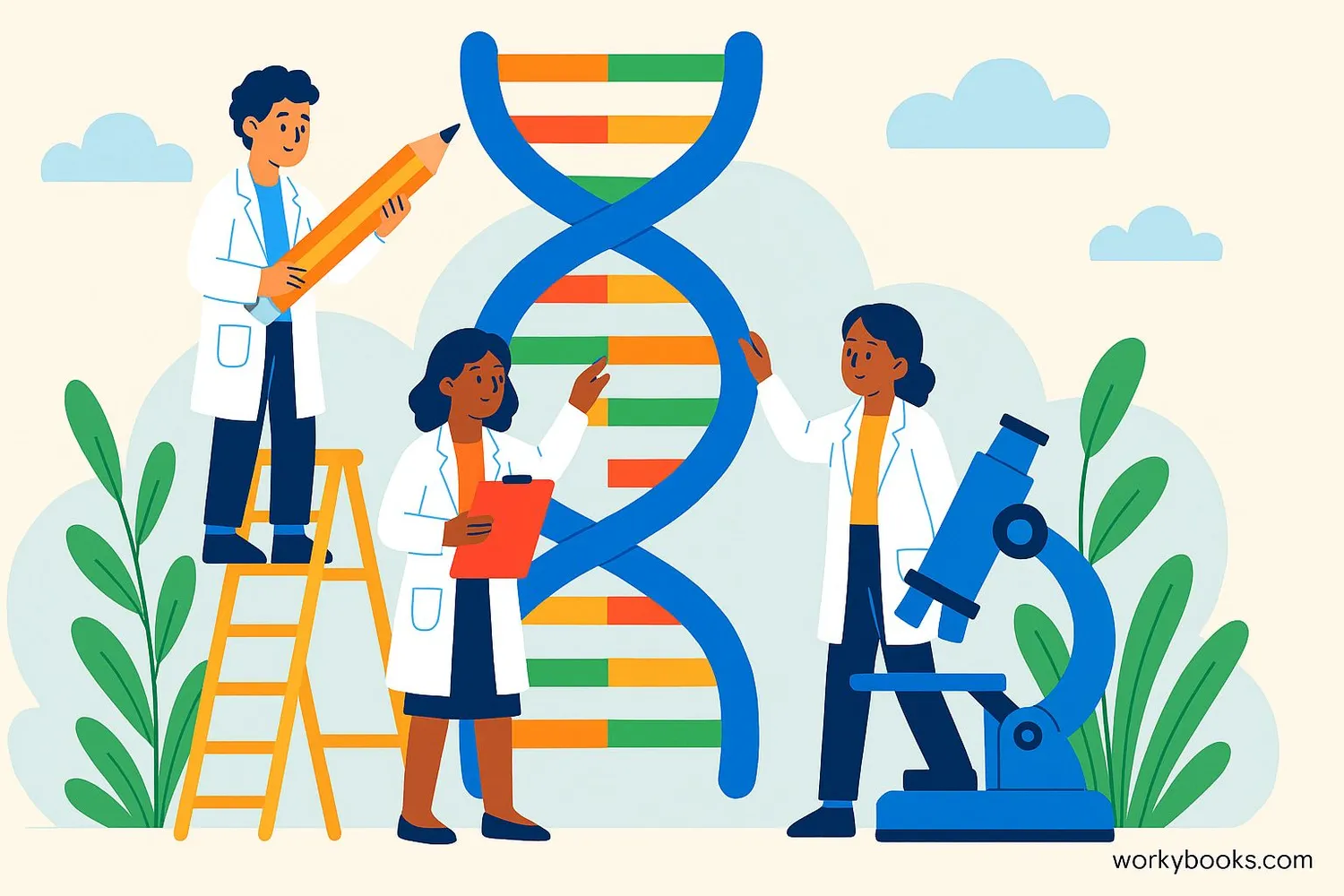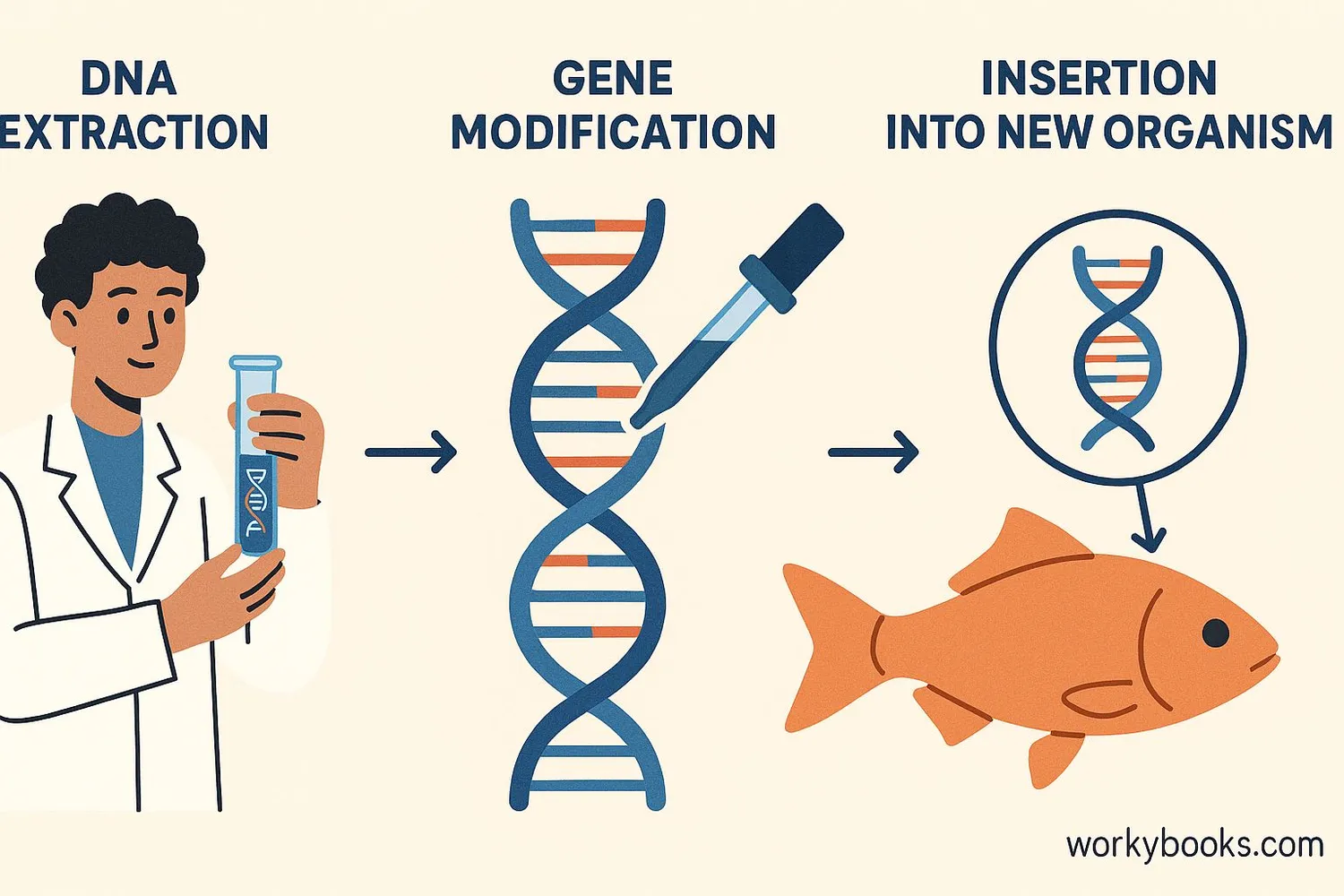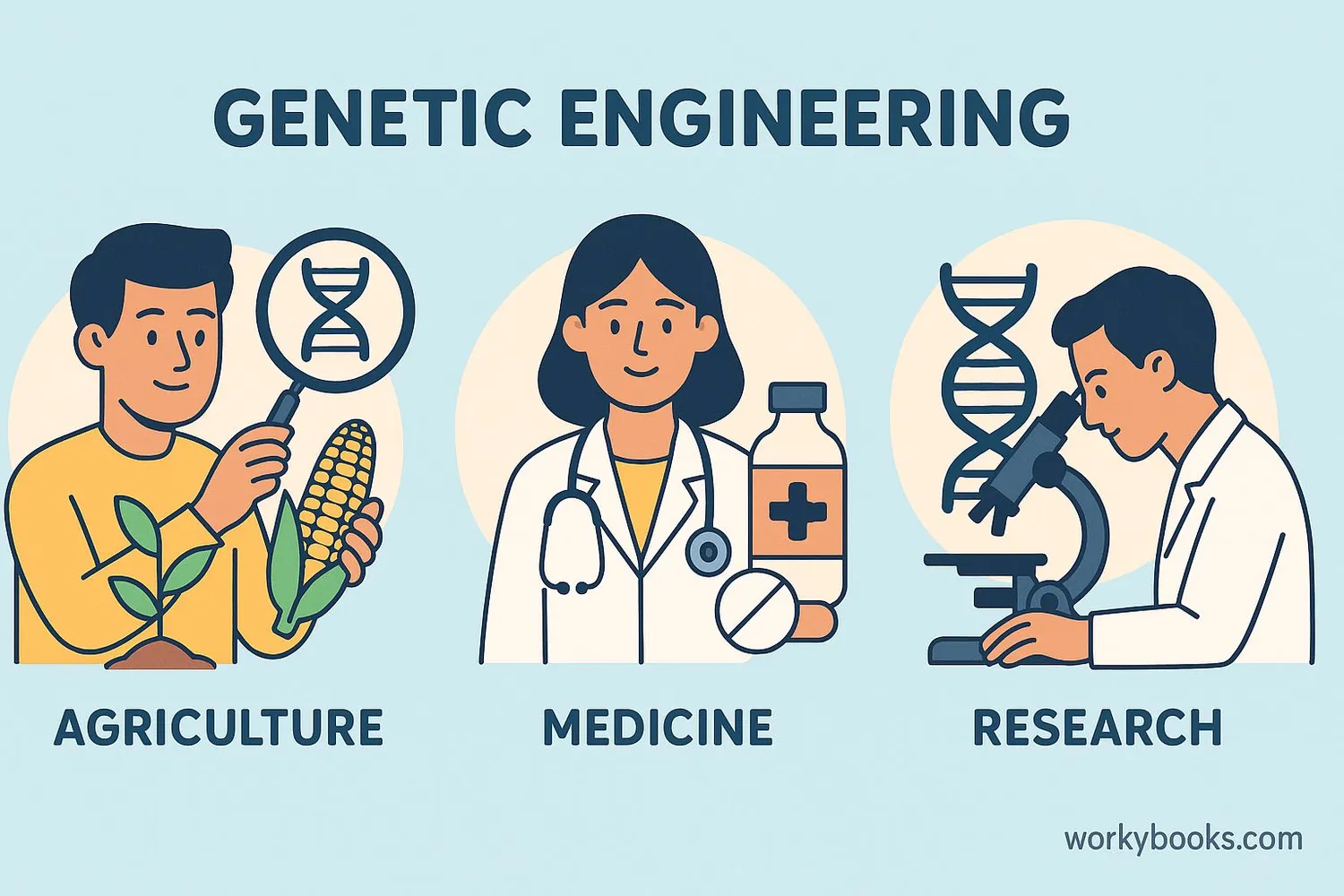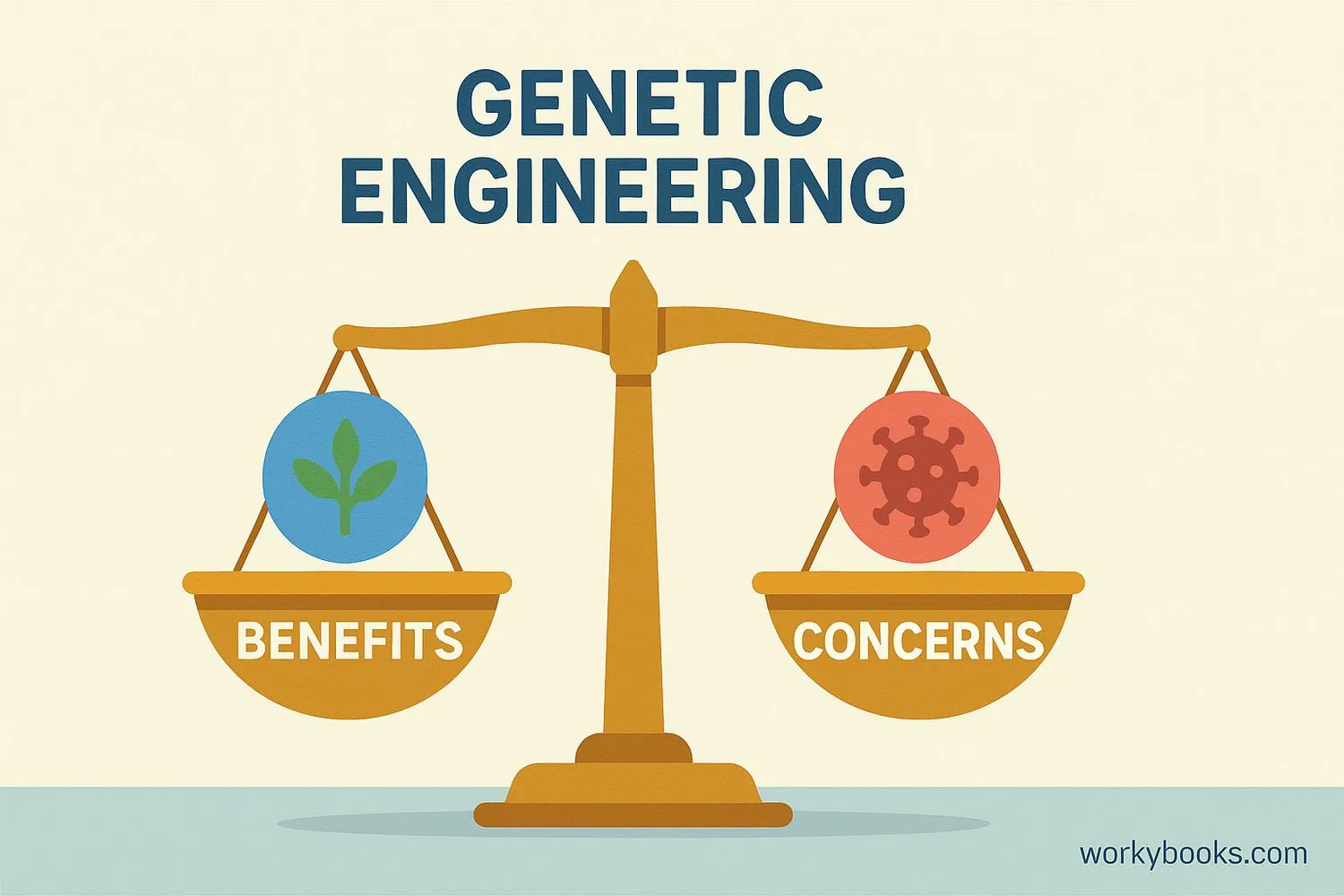Genetic Engineering - Definition, Examples, Quiz, FAQ, Trivia
Learn how scientists work with DNA to change living things!
What is Genetic Engineering?

Genetic engineering is when scientists change the DNA of a living thing. DNA is like a set of instructions that tells living things how to grow and function. By changing these instructions, scientists can give organisms new abilities or characteristics.
Think of DNA as a recipe book for making a living thing. Genetic engineering allows scientists to add new recipes or change existing ones. This can help plants grow better in different conditions, help bacteria make medicine, or even help doctors treat diseases.
DNA Fact!
If you stretched out all the DNA in one cell, it would be about 2 meters long! But it's packed so tightly that it fits inside a microscopic cell.
How Genetic Engineering Works

Genetic engineering might sound complicated, but it follows a logical process. Scientists use special tools to work with tiny DNA molecules. Here are the main steps:
Identify
Scientists find the specific gene they want to work with
Extract
The gene is carefully removed from the DNA
Modify
The gene might be changed or combined with other genes
Insert
The new gene is placed into the DNA of another organism
Grow
The organism grows with its new characteristics
Scientists use special enzymes like "molecular scissors" to cut DNA at specific places. Then they can insert new genes and use "molecular glue" to put the DNA back together. It's like editing a sentence in a book by carefully cutting and pasting words.
Tool Fact!
Scientists use a tool called CRISPR that works like a pair of microscopic scissors to cut DNA at exact locations. It's one of the most important discoveries in genetic engineering!
Genetic Engineering Examples

Genetic engineering has many practical uses that help people, animals, and the environment. Here are some important examples:
Medicine
Bacteria are engineered to produce insulin for people with diabetes
Agriculture
Crops are modified to resist pests or grow in difficult conditions
Research
Scientists use modified animals to study diseases and test treatments
Some specific examples include:
• Golden Rice - Rice modified to produce Vitamin A to prevent blindness
• BT Cotton - Cotton plants that produce their own pest resistance
• Insulin-producing bacteria - Bacteria that make human insulin for diabetes treatment
• Glowing plants - Plants that contain genes from glowing jellyfish
These examples show how genetic engineering can solve real-world problems and help people live healthier lives.
Pros and Cons of Genetic Engineering

Like many powerful technologies, genetic engineering has both benefits and concerns. It's important to understand both sides:
Benefits
- Can help produce more food to feed growing populations
- Can create medicines that are more effective and affordable
- Might help treat or prevent genetic diseases
- Could help protect crops from pests without using pesticides
- Might help create plants that can grow in changing climates
Concerns
- Possible unknown long-term effects on health and environment
- Ethical questions about modifying living things
- Genes might spread to wild plants in unexpected ways
- Could increase dependence on large companies for seeds
- Some people have religious or philosophical objections
Scientists, governments, and communities continue to discuss how to use genetic engineering responsibly. Regulations help ensure that genetically modified organisms are carefully tested before being used.
Genetic Engineering Quiz
Test your knowledge with this quiz! Answer all 5 questions to see how much you've learned about genetic engineering.
Frequently Asked Questions
Here are answers to some common questions about genetic engineering:
Fun Genetic Engineering Facts
Discover some amazing facts about genetic engineering!
Tiny Instructions
The DNA from a single human cell contains about 3 billion bits of information. If written out, it would fill about 1,000 books of 500 pages each!
Medical Marvel
Before genetic engineering, insulin for diabetics came from pigs and cows. Now, most insulin is made by genetically modified bacteria that produce human insulin!
Rainbow Plants
Scientists have created plants that glow in the dark by adding genes from glowing jellyfish! These plants could potentially be used as natural lighting.
Glowing Fish
The first genetically modified pet is a glowing zebrafish called GloFish! It contains genes from sea corals that make it fluorescent under certain lights.


